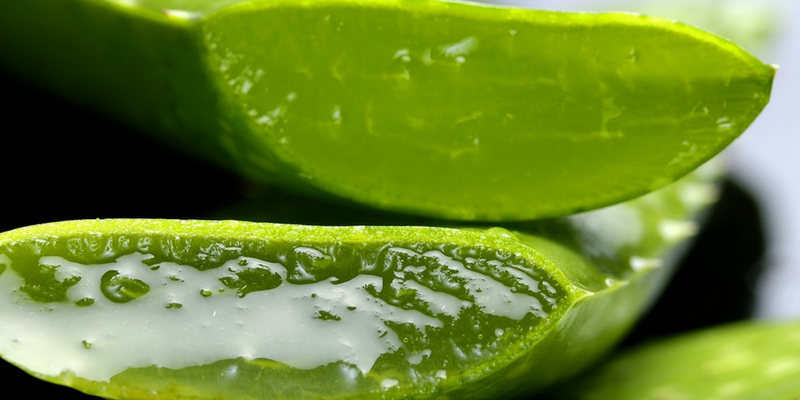How to Treat a Sunburn

In a perfect world, all sunburns would be prevented with great use of sunscreen and sun-protective clothing. However, if you do get a sunburn, the next best thing you can do is properly care for your skin while it heals, then make sure you prevent future sunburn. Here are my step-by-step recommendations for treating a sunburn.
1. Take Ibuprofen
Sunburns often cause pain, tenderness, redness and sometimes even headaches. Ibuprofen is a nonsteroidal anti-inflammatory that can help to reduce these symptoms and make you more comfortable as your skin starts to heal. Take 400mg of ibuprofen every four hours until redness goes away. You can also eat foods with anti-inflammatory properties.
2. Apply Topical Aloe to Small Areas
Derived from the aloe vera plant, aloe gel has long been used to soothe burns and wounds, thanks to its cooling and anti-inflammatory properties. Aloe has also been shown to accelerate wound healing and has been reputed to have antimicrobial effects as well. For these reasons, aloe is an excellent topical ingredient to apply to smaller areas of sunburn.
You can find pure aloe vera gel at your local drugstore, and it is fairly inexpensive. It is available in both rub-on gel and sprays, which can come in handy if your sunburn is still tender to touch.
3. Apply Topical Argan Oil to Larger Areas
If you’re dealing with a larger sunburnt area, apply topical argan oil. This amazing ingredient is a powerful anti-inflammatory that has also been shown in small studies to aid in wound healing and moisturize skin. When buying argan oil, make sure the product contains 100% pure argan oil, like PAORR 100% Moroccan Argan Oil. It should be free of preservatives, fragrance, and even water. Keep in mind that pure Moroccan argan oil will be more expensive than diluted products, but the effectiveness of pure argan oil is well worth the extra cost in the long run.
4. Take Heliocare Supplements
Heliocare is an oral antioxidant supplement that can be taken daily to help keep your skin protected from free radical damage caused by the sun. It also contains fern extract, which has been clinically proven to help protect skin from the sun’s UV rays. Heliocare should be used in addition to topical SPF, however, as it is still not a substitute for sunscreen.
Although it is better to take Heliocare supplements prior to sun exposure, they can be used as a “rescue” treatment afterwards to reduce side effects afterwards if you forgot to take them earlier.
5. Do Not Exfoliate or Peel Skin
As tempting as it might be to try to scrub away or peel off flaking skin after a sunburn, do not do this. Let the skin fall of naturally. Otherwise, you could cause more irritation, infection, or scarring.
Taking a cool shower or bath can help to soothe your skin if it becomes itchy when peeling. Just be sure to pat your skin dry instead of aggressively rubbing it with your towel.
6. Cover New Skin with SPF
Once flakes of skin do naturally fall off, be sure to cover these areas with sunscreen every day. Do not rely on clothing, because clothing is usually only an SPF of 5. However, if the sunburn is on your face, head, or neck, wearing a wide-brimmed hat and sunglasses can offer added protection, in addition to your sunscreen.
7. Wear Soft Clothing
Avoid wearing scratchy clothing that could rub against your skin and cause irritation and redness. Instead, wear a soft fabric like cotton that won’t make matters worse.
8. Load up on Antioxidants
Antioxidants are molecules that fight and protect against free radicals caused by sun exposure and other environmental factors. If left unchecked, free radical damage can cause wrinkles, sun spots, sagging skin, and skin cancer. Since sunburn is a sign of skin damage, try to get as many antioxidants as you can. For example, you can drink green tea and add turmeric and other antioxidant-rich ingredients to your food. Berries, walnuts, and dark chocolate are also high in antioxidants.
Bottom Line
Wearing sunscreen every day, even when you’re not planning to go outside for very long, is the best way to prevent a sunburn in the first place. However, when a sunburn does happen, follow the eight steps listed above to help you stay comfortable and speed up the healing process.
If years of sun exposure and sunburns have left you with signs of sun damage like dark spots, wrinkles, and a dull, uneven complexion, there are various skin treatments that can help to brighten your skin and create a more even tone and texture. Contact Baumann Cosmetic Dermatology at info@derm.net for more information about these treatments, or follow us on Facebook, Instagram, and YouTube for more skincare tips and tricks!
Wishing you great skin!


